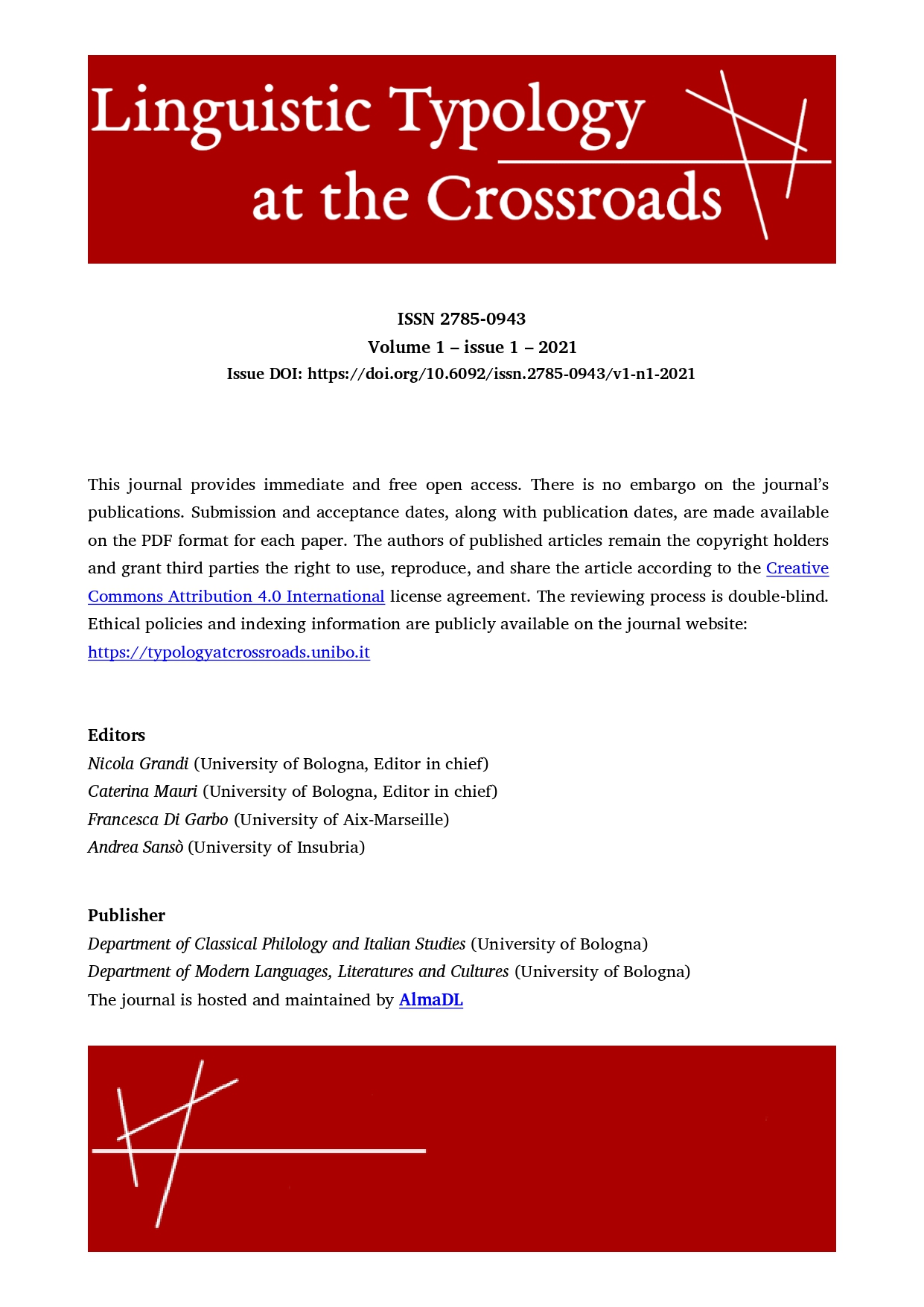Diachronic evolution of Russian standard markers kako and aky
DOI:
https://doi.org/10.6092/issn.2785-0943/13431Keywords:
Old Russian, manner, comparison, equative constructions, similative constructionAbstract
Modern Russian uses the same marker kak ‘how’ to introduce the standard in equative and similative constructions. Historical grammars claim that the same polysemy is found in Old Russian, where three markers, kako, aky and jako, are used interchangeably. Based on the analysis of chronicles and documents of the 11th–15th centuries and queries in the Russian National Corpus, we show that it is not the case: the markers kako and aky are distributed functionally. In the 11th–15th centuries kako is predominantly used in specific contexts which we propose to call “implicit parameter equative” (IPE), while aky is the main standard marker in similatives. In the 16th and 17thcenturies kako expands onto similative and equative constructions. The 18th century sees the complete loss of akyand the fossilization of the equative construction including the correlative pairs such as tak(oj)… kak, stol’… kak and others. As for the marker jako, it is a general subordinator that can be used in all the relevant contexts.
Downloads
References
Bulaxovskij, Leonid A. 1958. Istoričeskij kommentarij k russkomu literaturnomu jazyku [Historical comments to Standard Russian]. Kiev: Radjans’ka škola.
Borkovskij, Viktor I. & Pёtr S. Kuznecov. 1965. Istoričeskaja grammatika russkogo jazykа. [Historical Grammar of Russian.] Moscow: Nauka.
Diessel, Holger & Martin Hilpert. 2016. Frequency effects in grammar. In Mark Aronoff (ed.), Oxford Research Encyclopedia of Linguistics. New York: Oxford University Press.
Hilpert, Martin & Stefan Th. Gries. 2009. Assessing frequency changes in multi-stage diachronic corpora: Applications for historical corpus linguistics and the study of language acquisition. Literary and Linguistic Computing 24(4). 385-401.
Kölbel, Marianne. 1993. To grin like a Cheshire cat. Arbeiten aus Anglistik und Amerikanistik 18. 3–22.
Fortescue, Michael. 2010. Similitude: A conceptual category. Acta Linguistica Hafniensia 42(2). 117–142.
Haspelmath, Martin & Oda Buchholz. 1998. Equative and similative constructions in the languages of Europe. In Johan van der Auwera (ed.), Adverbial Constructions in the Languages of Europe, 277–334. Berlin: Mouton de Gruyter.
Kobozeva, Irina M. & Olga YU. In’kova. 2018. “Kak” i ego dvuhmestnye varianty. Semantika konnektorov: kontrastivnoe issledovanie. Moscow: TORUS PRESS. 169–239.
Krys’ko, Vadim B. 2020. Istoričeskaja grammatika russkogo jazyka: encyklopedičeskij slovar’ [Historical grammar of Russian: encyclopedia]. Moscow: Azbukovnik.
Letuchiy, Alexander B. 2015. Sravnitel’nye konstrukcii [Comparative constructions]. Materials for the project of the Russian Corpus Grammar (http://rusgram.ru). Ms. Moscow.
Lomtev, Timofej P. 1956. Očerki po istoričeskomu sintaksisu russkogo jazyka: učebnoje posobije dlja gosudarstvennyx universitetov [Sketches on historical syntax of Russian: a manual for state univerisities]. Moscow: MSU.
Slovar russkogo jazyka XI~XVII vv. [Dictionary of Russian language of the XI-XVIIth centuries]. Starting from 1975. Moscow: Nauka.
Sreznevskij, Izmail I. 1893. Materialy dlya slovarya drevnerusskogo yazyka [Materials for the dictionary of the Old Russian language]. Saint-Petersburg: edition of the Department of Russian language and literature of the Imperial Academy of Sciences (1893–1902).
Švedova, Natalia YU. 1980. Russkaja grammatika [Russian grammar], vol. I–II. Moscow: Nauka.
Stecenko, Аleksej N. 1972. Istoricheskij sintaksis Russkogo yazyka [Historical syntax of Russian.] Moscow: Vysshaja Shkola.
Treis, Yvonne & Martine Vanhove (eds.). 2017. Similative and Equative Constructions: A cross-linguistic perspective. Amsterdam/Philadelphia: John Benjamins.
Treis, Yvonne. 2018. Comparative Constructions: An Introduction. Linguistic Discovery 16(1). i–xxvi.
Downloads
Published
How to Cite
Issue
Section
License
Copyright (c) 2021 Irina Kobozeva, Natalia Serdobolskaya

This work is licensed under a Creative Commons Attribution 4.0 International License.





